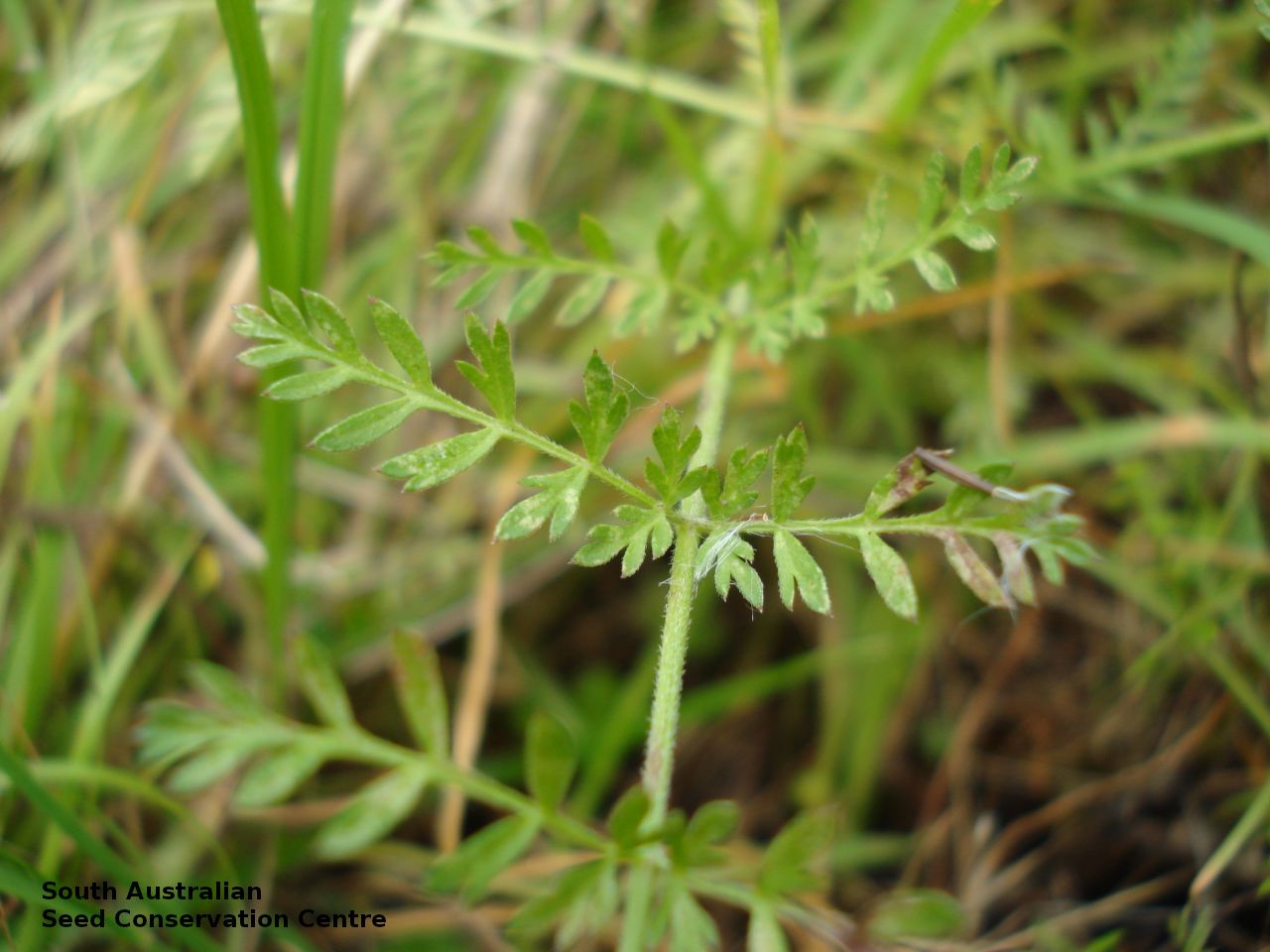
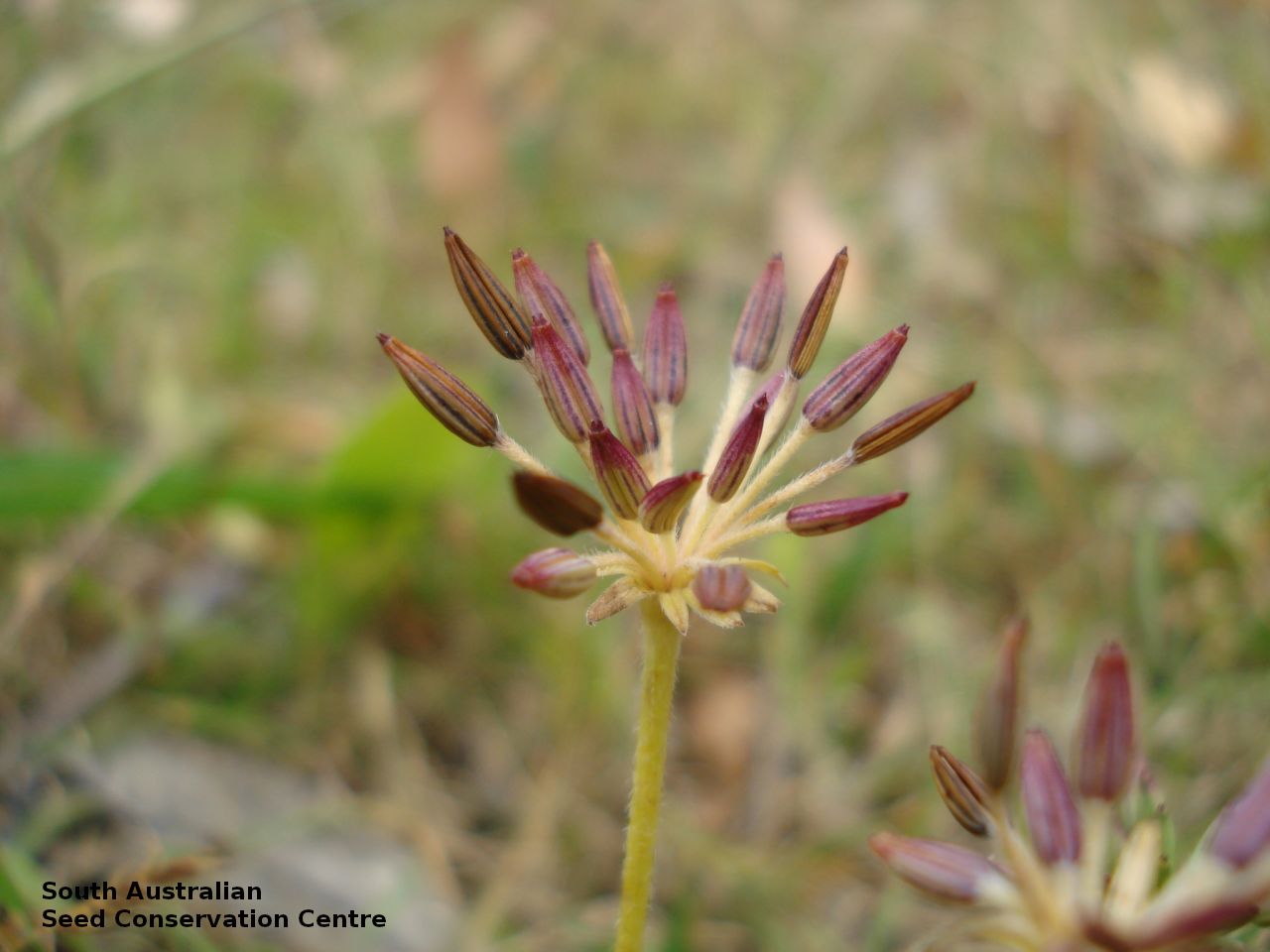
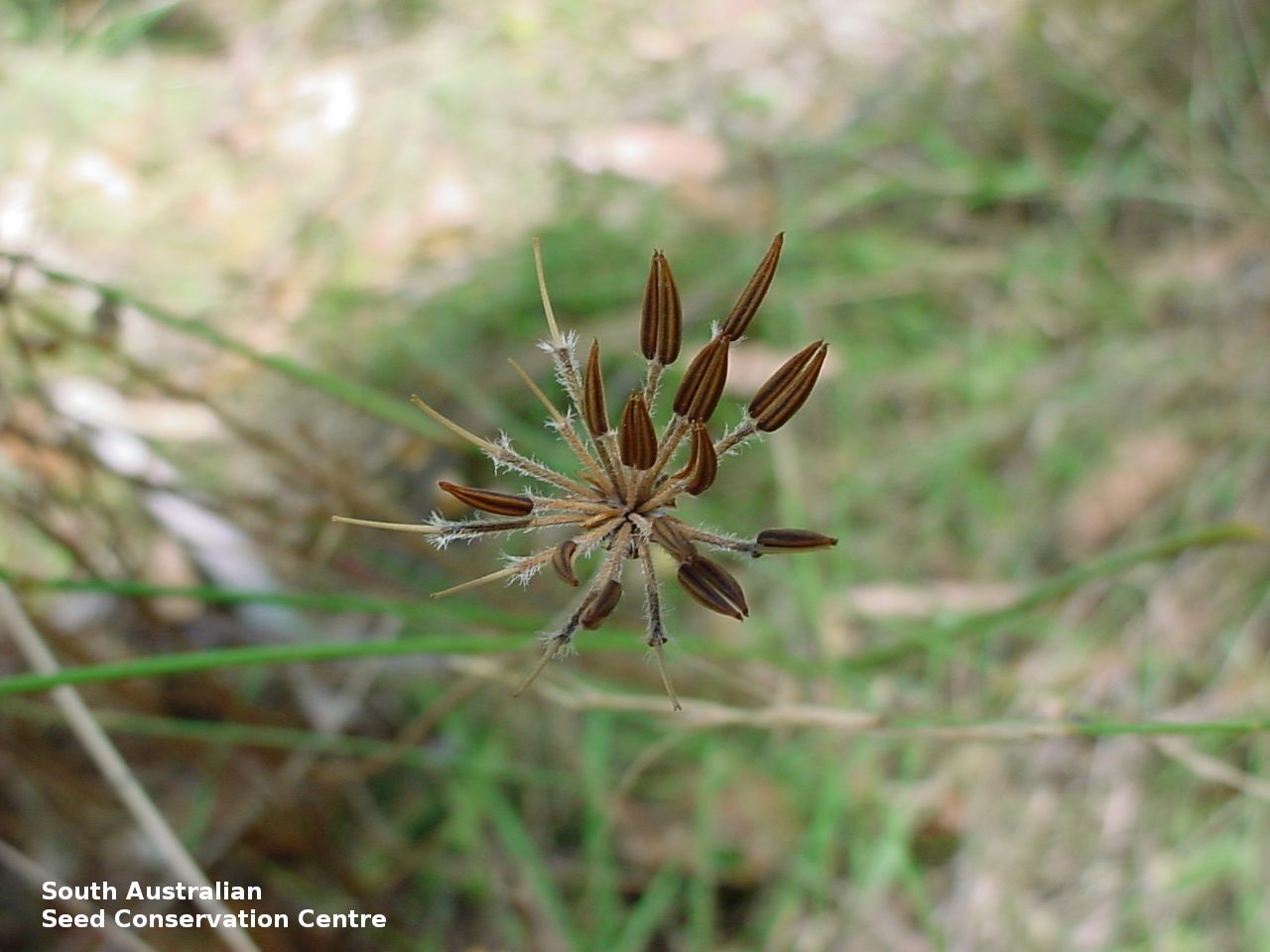
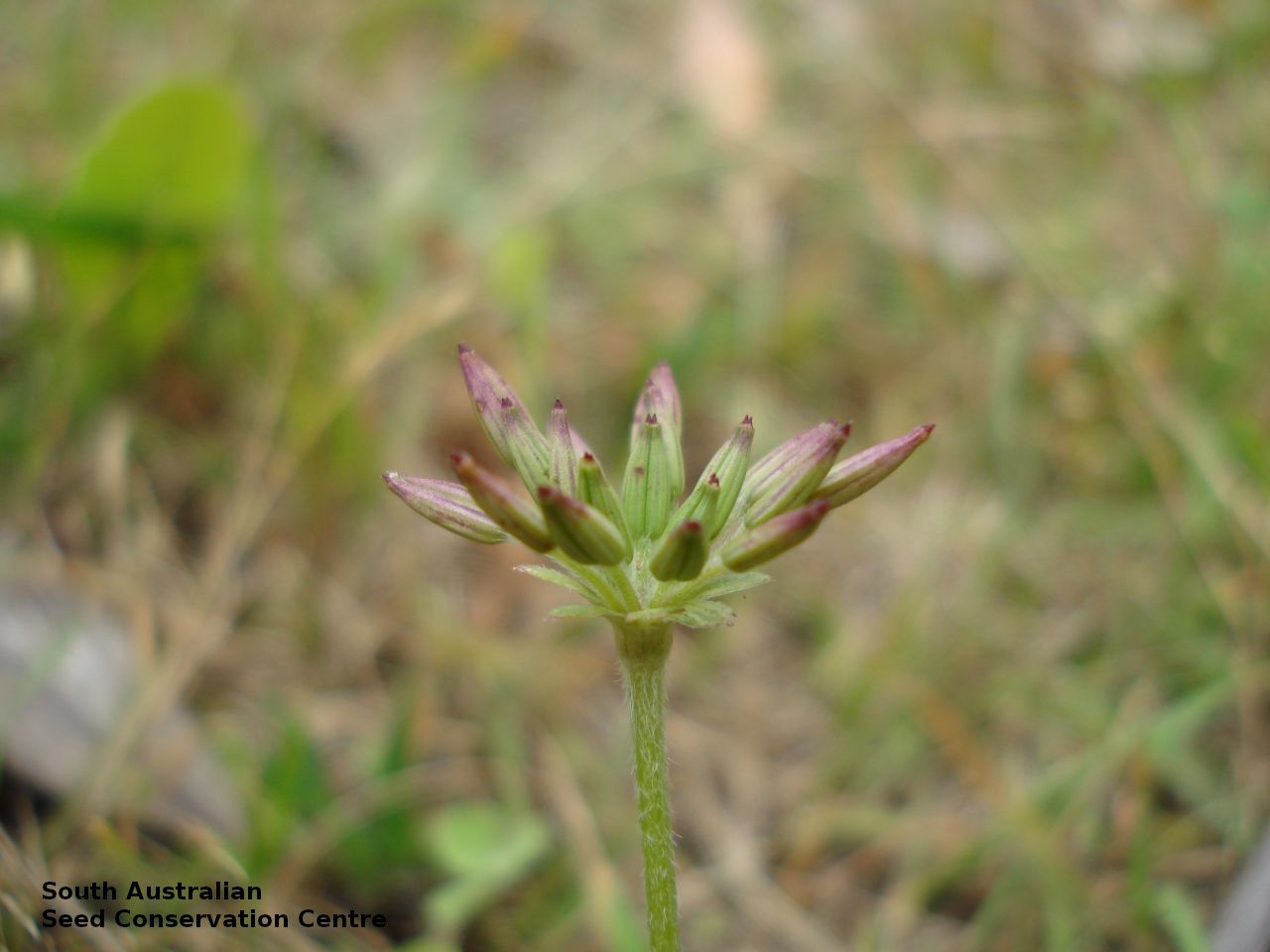
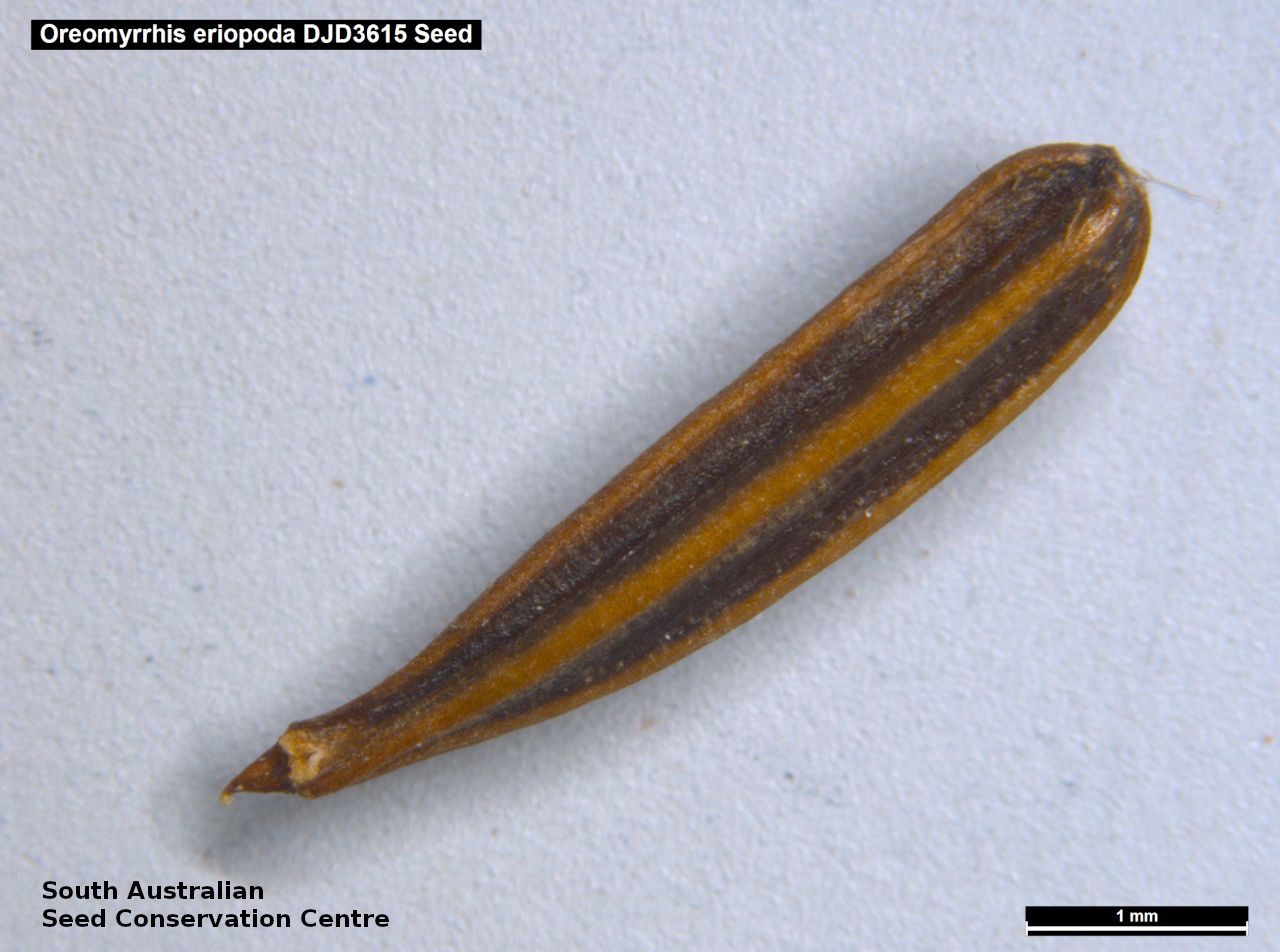
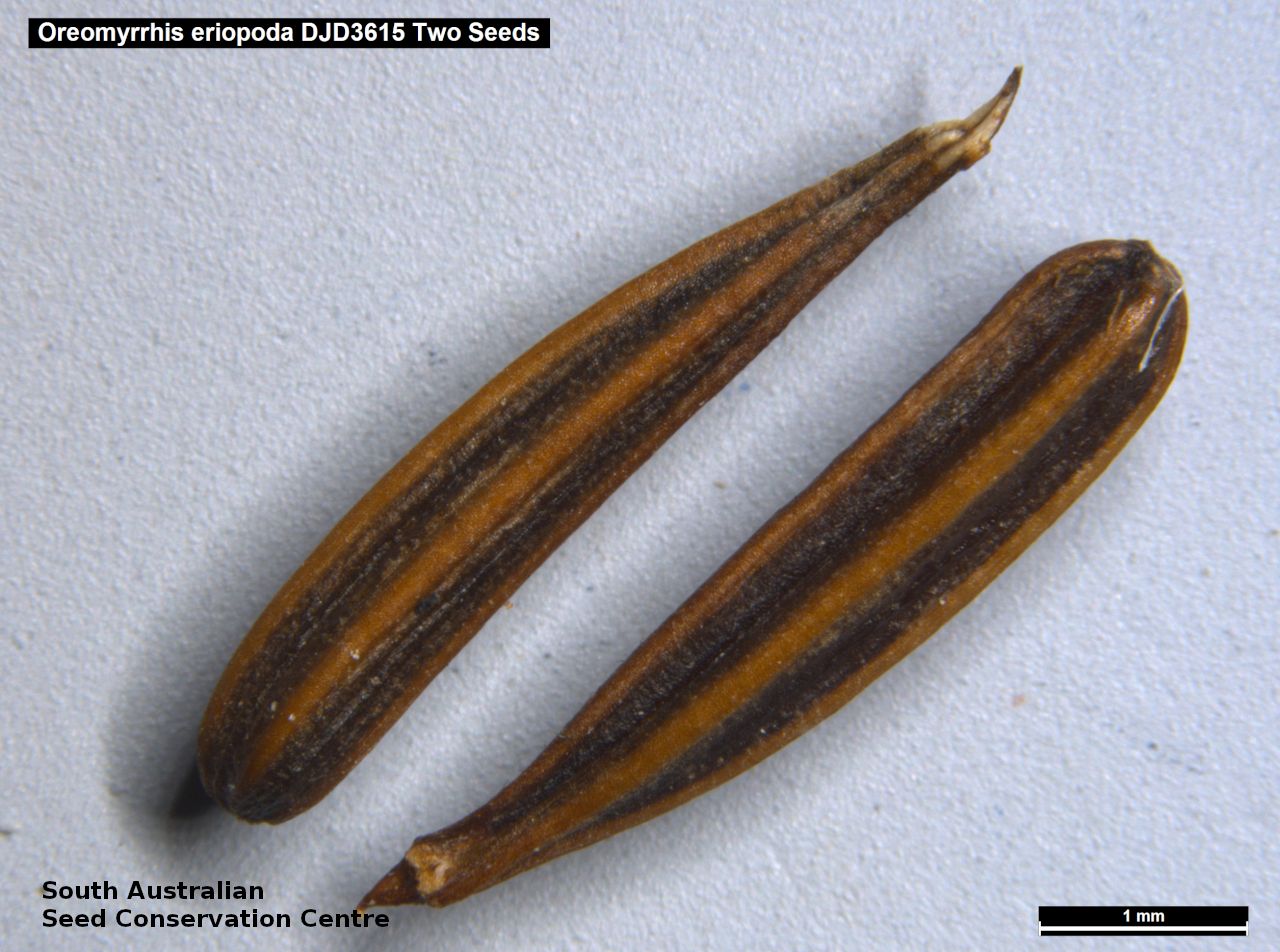
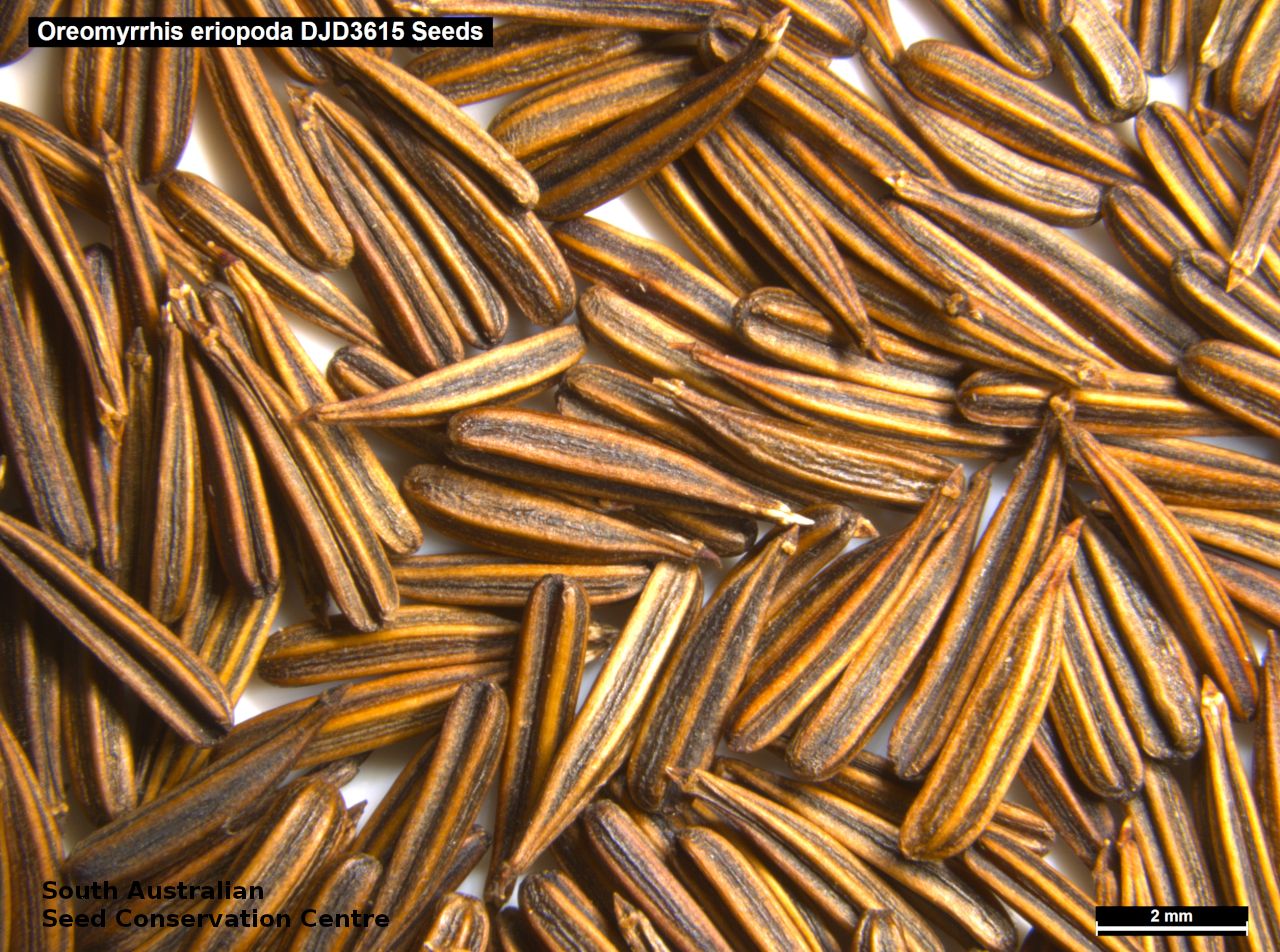
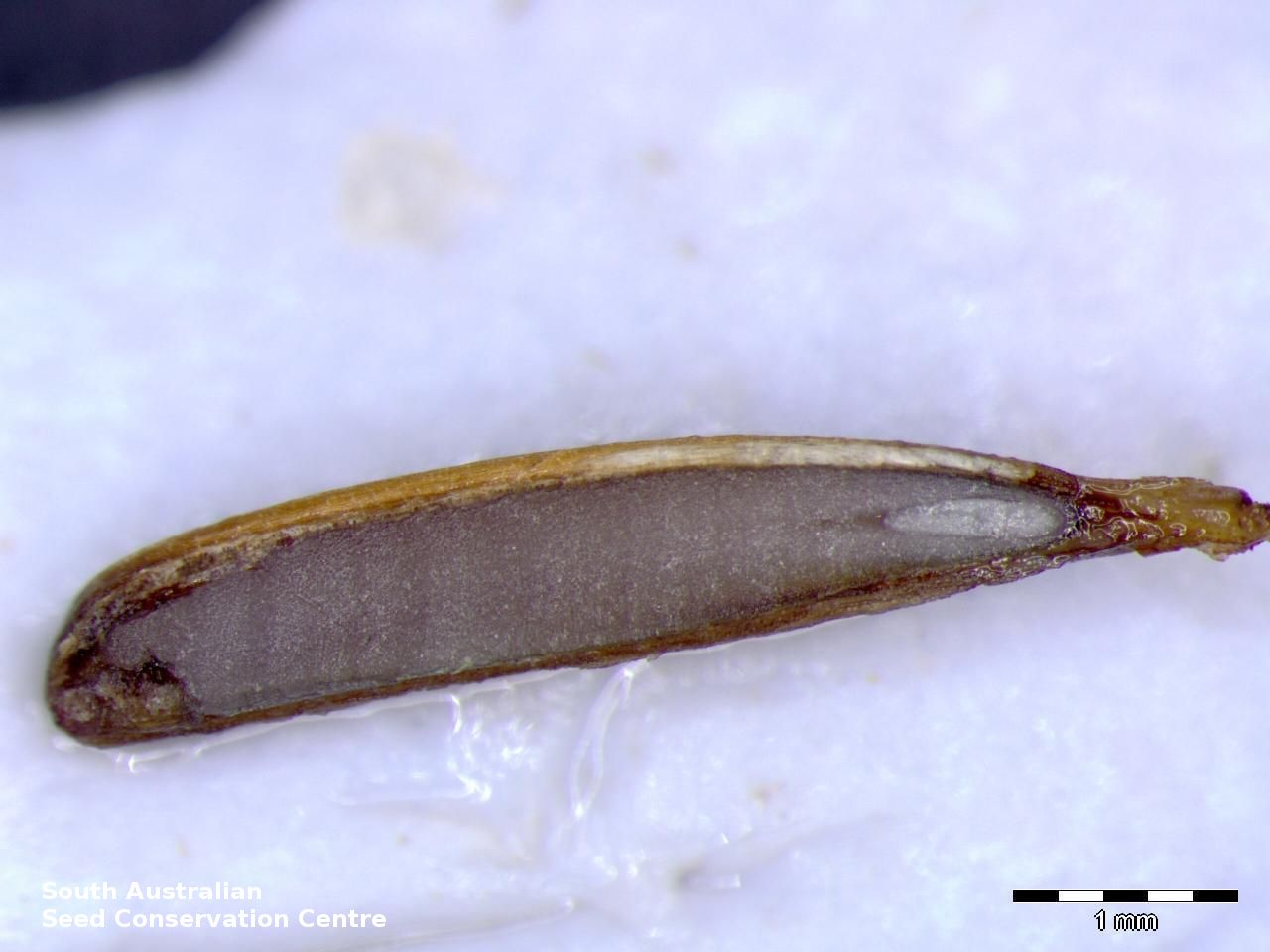
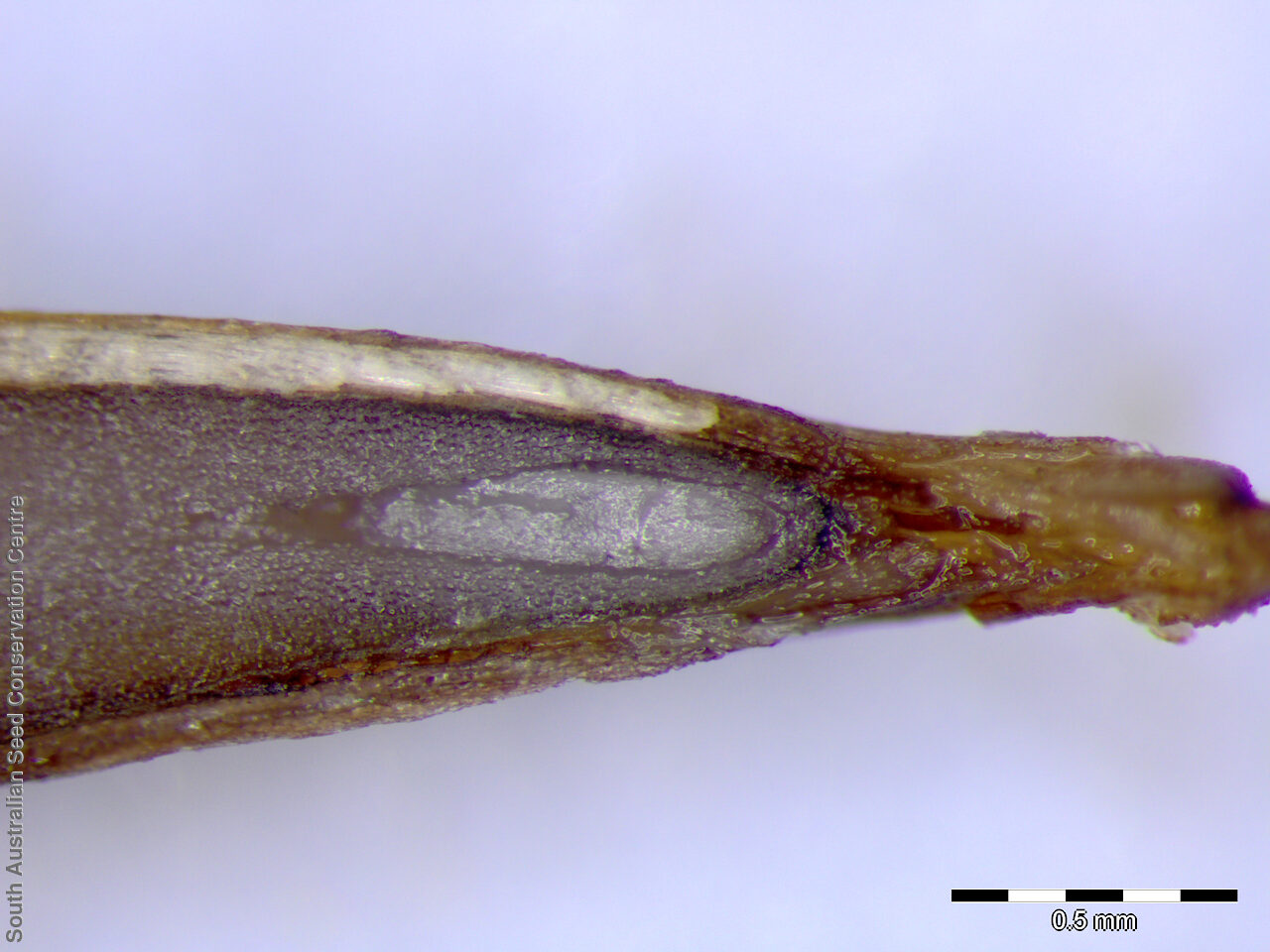
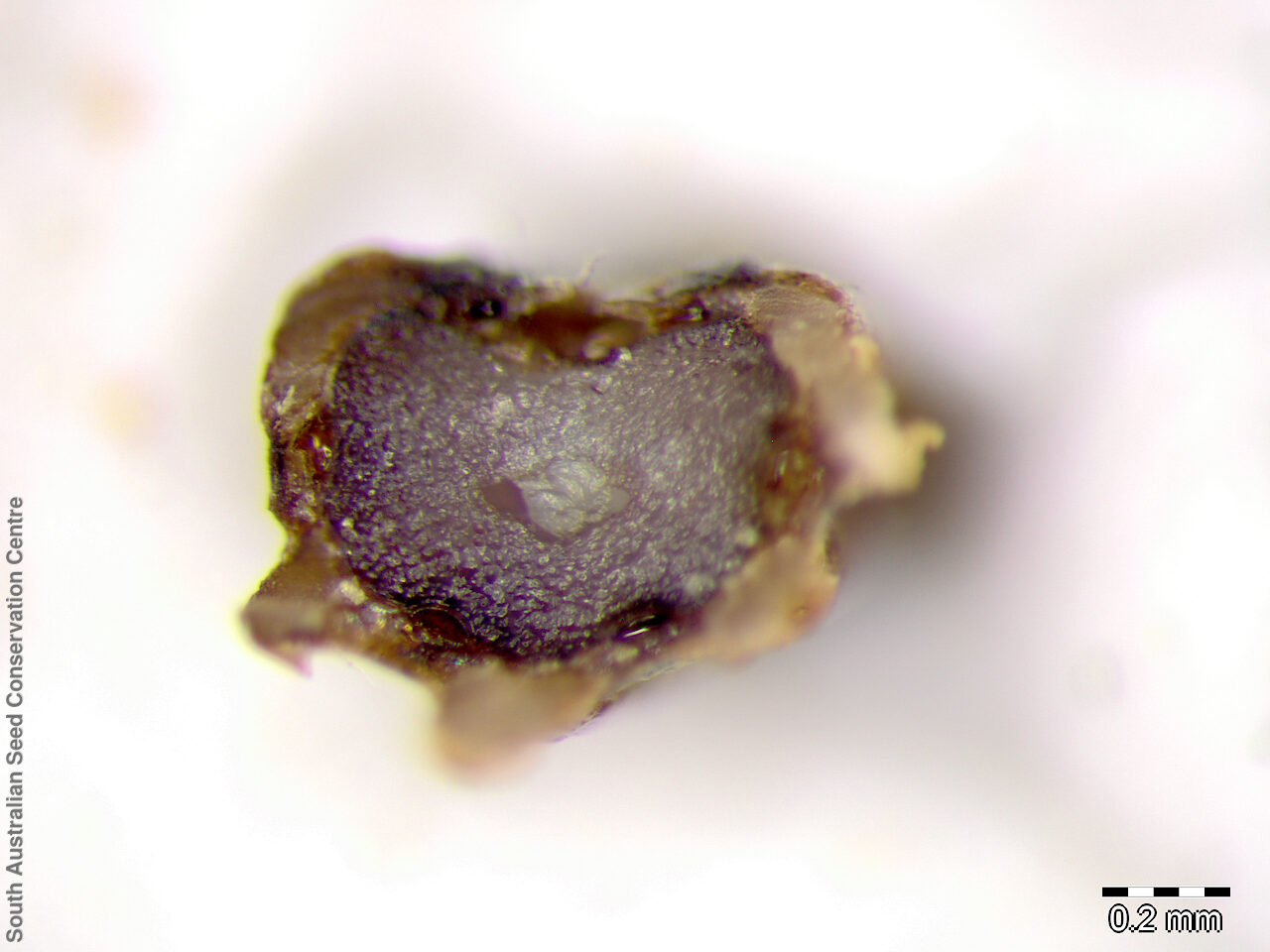


Prior names
Oreomyrrhis andicola, partly
Caldasia eriopoda
Etymology
Oreomyrrhis from the Greek 'oreos' meaning mountain and 'myrrhis' the fragrant European herb known botanically as Myrrhis odorata, and in England as sweet ciceley or myrrh; alluding to the genus habitat and similarity to the genus Myrrhis. Eriopoda from the Greek 'erion' meaning wool and 'podos' meaning foot or woolly stalk; alluding to the species woolly flower stalk.
Distribution and status
Found only in two areas in South Australia, the southern Mount Lofty Ranges and the lower South-east, growing in grassland, open heath and woodland communities. Also found in New South Wales, Victoria and Tasmania. Native. Endangered in South Australia. This endangered herb is only known from two locations in the Adelaide & Mount Lofty Ranges region. The SA Seed Bank collected more than 10,000 seeds for a population in the Kangarilla area with the support of the AMLR NRM.
Herbarium regions: Southern Lofty, South Eastern, Green Adelaide
NRM regions: Adelaide and Mount Lofty Ranges, South East
AVH map: SA distribution map (external link)
Plant description
An erect perennial herb that dies off and re-shoots each year. Leaves are basal and are deeply lobed, similar to carrot leaves. Flowers are small and white in a cluster at the end of a long stalk. Flowering between September and November. Fruits are large brown seed-head at the terminal of stems with numerous seeds. Seeds are dark brown cylindrical seeds to 6 mm long and 1 mm wide, with a number of ridges across its coat. One end is narrower than the other a bit like a bottle. Seed embryo type is linear under-developed.
Seed collection and propagation
Collect seeds between November and February. Pick mature seeds off the seed-heads, usually these are dark brown and will come off easily. Minimal cleaning required if only the seeds are collected from the seed-heads. Store the seeds with a desiccant such as dried silica beads or dry rice, in an air tight container in a cool and dry place. From six collections, the seed viability were high, ranging from 90% to 100%. Seeds are non-dormant, viable seed should germinate readily.
| Location | No. of seeds (weight grams) | Number of plants | Date collected | Collection number Collection location | Date stored | % Viability | Storage temperature |
|---|---|---|---|---|---|---|---|
| BGA MSB | 3,700 (9.45 g) 3,700 (9.45 g) | 100+ | 26-Jan-2005 | DJD101 Southern Lofty | 28-Mar-2006 | 95% | +5°C, -18°C |
| BGA | 3,500 (8.21 g) | 70+ | 5-Dec-2006 | DJD712 South Eastern | 1-Aug-2007 | 100% | +5°C, -18°C |
| BGA | 1,400 (2.56 g) | 40 | 5-Dec-2006 | DJD714 South Eastern | 1-Aug-2007 | 100% | +5°C, -18°C |
| BGA | 420 (1.03 g) | 100+ | 1-Dec-2006 | DJD604 Southern Lofty | 1-Aug-2007 | 100% | -18°C |
| BGA | 28,500 (55.45 g) | 50+ | 4-Dec-2007 | TST243 Southern Lofty | 19-Sep-2008 | 100% | +5°C, -18°C |
| BGA | 4,800 (7.82 g) | 50+ | 9-Feb-2010 | TST918 Southern Lofty | 1-Jun-2010 | 100% | -18°C |
| BGA | 7,300 (12.73 g) | 9-Feb-2010 | Thomas Gully Southern Lofty | 1-Jan-2012 | 90% | +5°C, -18°C | |
| BGA | 10,500 (19.02 g) | 100+ | 9-Feb-2017 | DJD3615 Southern Lofty | 1-Nov-2017 | 100% | +5°C, -18°C, -80°C |
| BGA | 5,100 (8.48 g) | 20 | 2-Dec-2019 | DJD3615 Southern Lofty | 24-Jun-2020 | 100% | -18°C |
| BGA | 11,500 (20.178 g) | 100+ | 8-Dec-2021 | DJD4059 Southern Lofty | 20-Jun-2023 | 100% | -18°C, -80°C |
| BGA | 13,930 (20.498 g) | 200+ | 25-Jan-2023 | DJD4172 Southern Lofty | 20-Jun-2023 | 85% | -18°C, -80°C |
Number of plants: This is the number of plants from which the seeds were collected.
Collection location: The Herbarium of South Australia's region name.
% Viability: Percentage of filled healthy seeds determined by a cut test or x-ray.